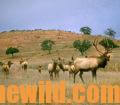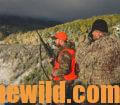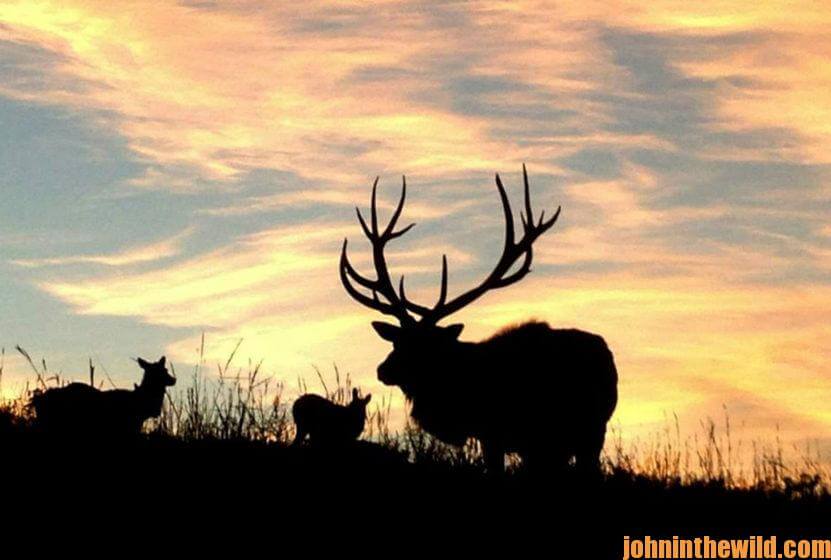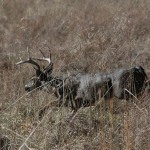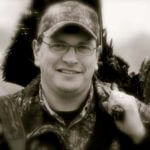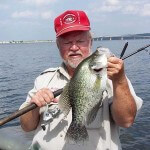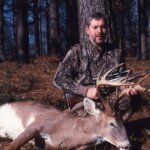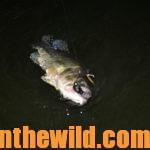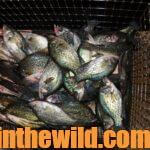Editor’s Note: Dieter Kaboth of Idaho, an avid elk hunter and former regional director for the Rocky Mountain Elk Foundation (https://www.rmef.org/), is a four-time World Champion elk bugler.
 During rifle season, there’s more human encroachment in the woods than at any-other time of year. If you’re an elk that’s down in a draw and suddenly hear an unusually-large number of vehicles on the road and ATVs cranking-up, or the elk is heading to the meadow where he’s been eating and sees four-wheelers and tents everywhere, plus campers hooping, hollering and building fires, you’ll be nervous too. And, then when you start hearing, “Boom, boom, boom,” all around you, you become very nervous.
During rifle season, there’s more human encroachment in the woods than at any-other time of year. If you’re an elk that’s down in a draw and suddenly hear an unusually-large number of vehicles on the road and ATVs cranking-up, or the elk is heading to the meadow where he’s been eating and sees four-wheelers and tents everywhere, plus campers hooping, hollering and building fires, you’ll be nervous too. And, then when you start hearing, “Boom, boom, boom,” all around you, you become very nervous.
I don’t want to be like all the other hunters who’ve made the elk so nervous and spooky that all these animals want to do is get away from all those noises. So, I start walking through the high country cow-calling. I don’t want to bugle, because I’m concerned that some hunter may use his riflescope instead of his binoculars to look and see me, and then I’m in danger. I always wear hunter orange. Remember that elk are herd animals, and they’ve learned that there’s safety in numbers. Pretending to be a nervous bull elk, I want the company of other elk. Then I’ll have more eyes, ears and noses around me to detect danger. Therefore, the more elk sounds I can produce, the greater my odds are for calling elk to me, because I’ll sound like a herd of elk moving. Too, as I walk through the woods hunting elk, I’ll kick-over rocks and break and rake limbs. Elk are big animals, and they make noises as they move through the woods. As a hunter, you’ll also make noises, but instead of sounding like a hunter, try to sound like a herd of elk.
 I’ve had bulls and cows sneak-up on me because they’ve wanted to be with what they think is a herd of cows. I’ve called-in many bulls over rifle season by not using a bugle at all but by simply walking through the woods, using a variety of cow calls and sounding like a herd of cow elk.
I’ve had bulls and cows sneak-up on me because they’ve wanted to be with what they think is a herd of cows. I’ve called-in many bulls over rifle season by not using a bugle at all but by simply walking through the woods, using a variety of cow calls and sounding like a herd of cow elk.
I like a cow call with a low, nasally tone that sounds like a mature cow and cast that call a long way. I also can calm the cow call down a little and use it very subtly. With my diaphragm calls, I can sound like calves and younger cows. I’ll mix all these different cow calls into my calling program to create the illusion of a herd on the move.
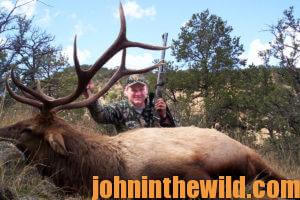 In a herd of elk, there’s a hierarchy, and often, the most-mature cow will lead the herd. Bulls and cows both are more inclined to follow a mature cow than they are to follow a calf or a younger cow, which is the reason for my calling sequence. But various cow calls are important to use, because in every herd, younger calves and cows are a part of the herd and also will be calling.
In a herd of elk, there’s a hierarchy, and often, the most-mature cow will lead the herd. Bulls and cows both are more inclined to follow a mature cow than they are to follow a calf or a younger cow, which is the reason for my calling sequence. But various cow calls are important to use, because in every herd, younger calves and cows are a part of the herd and also will be calling.
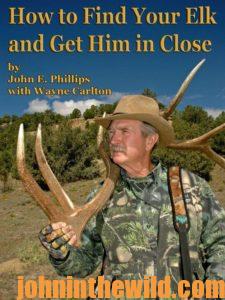 To learn more about elk hunting, check out John E. Phillips’ book, “How to Find Your Elk and Get Him in Close,” available in Kindle, print and Audible versions at http://amzn.to/17ENNqK. You may have to copy and paste this click into your browser. (When you click on this book, notice on the left where Amazon allows you to read 10% of the book for free).
To learn more about elk hunting, check out John E. Phillips’ book, “How to Find Your Elk and Get Him in Close,” available in Kindle, print and Audible versions at http://amzn.to/17ENNqK. You may have to copy and paste this click into your browser. (When you click on this book, notice on the left where Amazon allows you to read 10% of the book for free).

